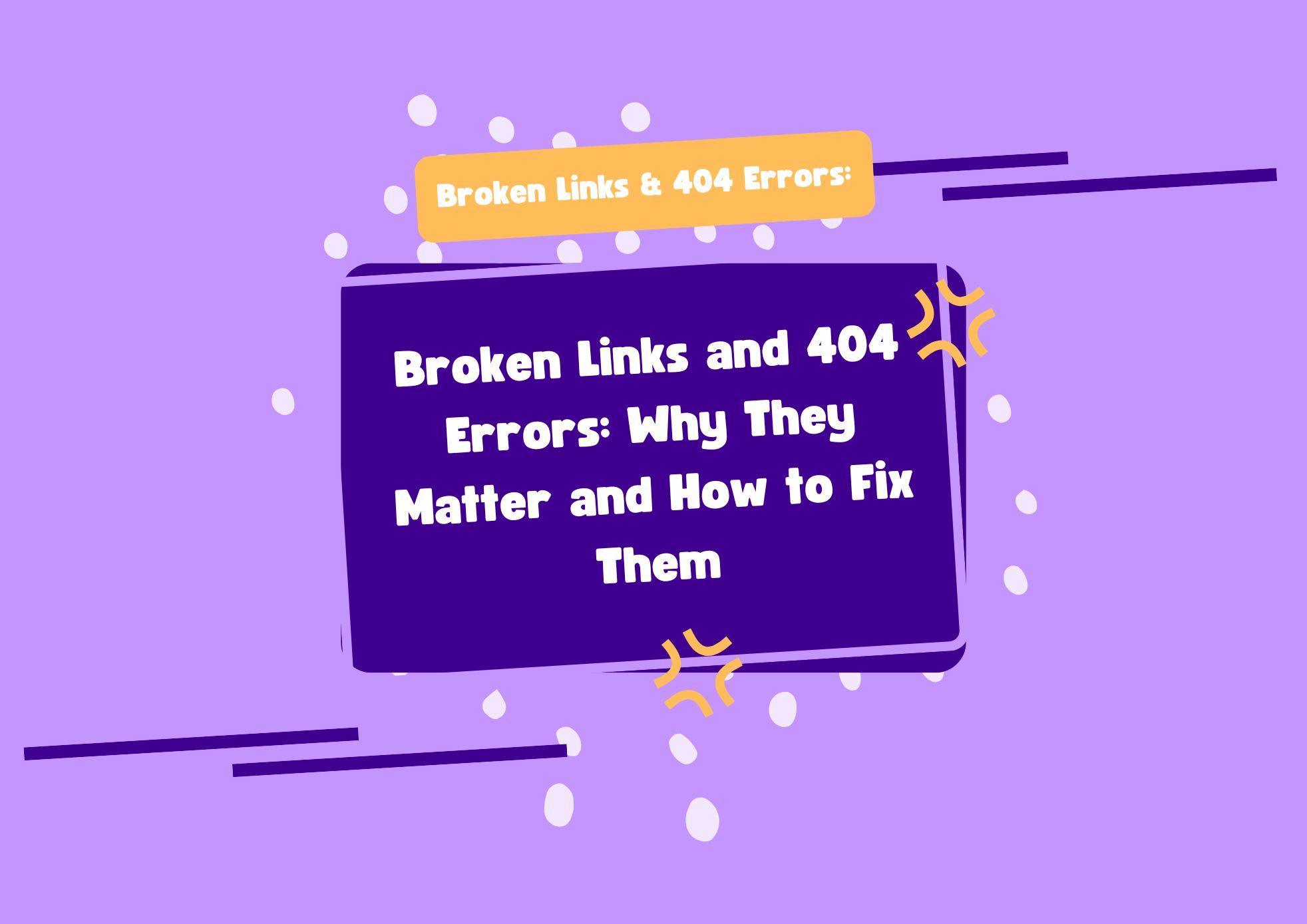Broken links and 404 errors may seem like small technical issues, but they can significantly impact your website’s user experience and search engine performance. Google treats site quality seriously, and a site filled with dead ends can harm your rankings, crawlability, and credibility.
This blog explains what broken links and 404 errors are, why they matter for SEO and usability, and how to monitor and fix them using methods aligned with Google’s best practices.
What Are Broken Links and 404 Errors
A broken link is a hyperlink that leads to a non-existent page. When a user or search engine bot follows that link, they land on a 404 error page, which means the requested URL could not be found on the server.
Broken links may occur due to:
- Deleted or moved pages without proper redirection
- Typographical errors in the URL
- Outdated external links
- Incorrect relative paths
404 errors are the HTTP status code that tells both users and search engines that the content is not available at that URL.
Why Broken Links and 404 Errors Matter
1. User Experience
When users encounter broken links, it disrupts their journey and reduces trust in the site. Poor navigation can lead to higher bounce rates and lower engagement.
2. SEO and Crawlability
Google bots crawl websites by following internal and external links. Broken links may lead to inefficient crawling, missed indexing opportunities, and a signal of low-quality maintenance. While a few 404 errors do not cause penalties, a large number can harm overall site quality in Google’s eyes.
3. Link Equity Loss
When internal links point to missing pages, any link equity or authority passed to those pages is lost. This weakens the overall internal linking structure, which is crucial for SEO.
4. Wasted Crawl Budget
Search engines allocate a limited crawl budget for each site. If crawlers keep hitting broken pages, it wastes resources and limits the indexing of important pages.
How to Identify Broken Links and 404 Errors
Google provides multiple tools and practices for identifying and resolving these issues:
1. Google Search Console
The Pages report under the Indexing section shows URLs that returned 404 errors. This includes details like the referring page and the date the error was detected.
2. URL Inspection Tool
You can check any URL individually in Search Console using the URL Inspection Tool to see if Google encountered a 404 status.
3. Site Crawling Tools
SEO tools like Screaming Frog, Ahrefs, and Semrush simulate how bots crawl your site and generate reports on broken links, including status codes and source pages.
4. Manual Check
You can also manually verify internal links in your CMS or content if the site is small or has few pages.
How to Fix Broken Links and 404 Errors
1. Implement 301 Redirects
If a page has been permanently moved, set up a 301 redirect to send both users and search engines to the correct new page. This preserves link equity.
2. Correct Typo URLs
Fix incorrect URLs in your content, menus, or sitemaps to ensure they point to valid pages.
3. Update or Remove Outdated Links
For outdated external links, either replace them with new sources or remove them entirely.
4. Create a Custom 404 Page
Having a user-friendly 404 page helps retain visitors by offering navigation back to important areas of your site, such as the homepage or sitemap.
5. Regular Site Audits
Set a routine to run technical audits monthly or quarterly to catch and fix new broken links early.
Preventing Future Errors
- Keep internal linking organized during site updates
- Update your XML sitemap regularly
- Use relative URLs carefully when migrating content
- Monitor Search Console notifications for crawl errors
- Review deleted content before removing URLs
Broken links and 404 errors can silently damage your site’s SEO and credibility. By routinely checking your site and resolving these issues as recommended by Google, you ensure a smoother user journey and a healthier search presence.
Fixing them is not only a technical task but a core part of maintaining website quality and SEO performance.



